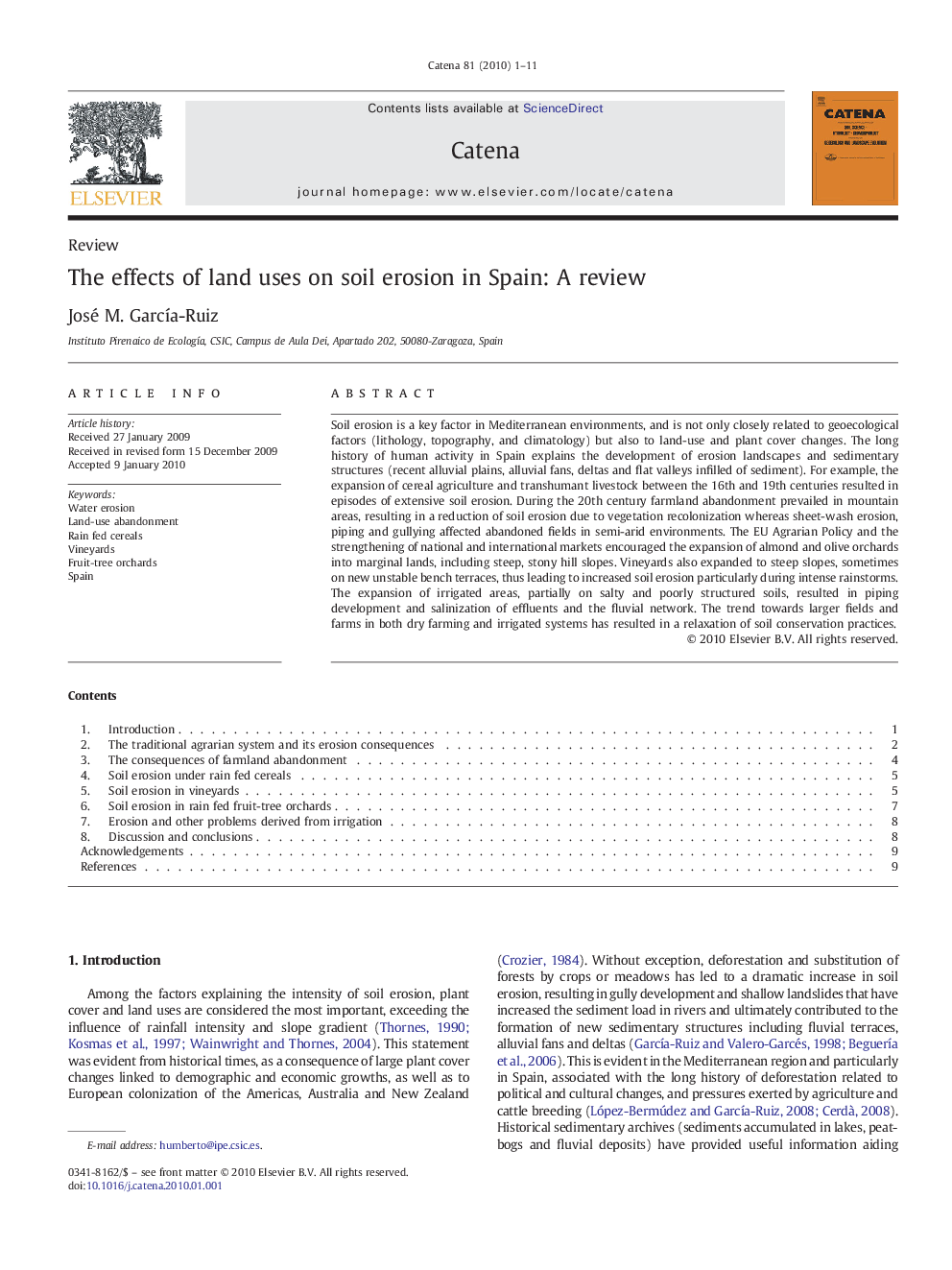| کد مقاله | کد نشریه | سال انتشار | مقاله انگلیسی | نسخه تمام متن |
|---|---|---|---|---|
| 4572115 | 1332152 | 2010 | 11 صفحه PDF | دانلود رایگان |

Soil erosion is a key factor in Mediterranean environments, and is not only closely related to geoecological factors (lithology, topography, and climatology) but also to land-use and plant cover changes. The long history of human activity in Spain explains the development of erosion landscapes and sedimentary structures (recent alluvial plains, alluvial fans, deltas and flat valleys infilled of sediment). For example, the expansion of cereal agriculture and transhumant livestock between the 16th and 19th centuries resulted in episodes of extensive soil erosion. During the 20th century farmland abandonment prevailed in mountain areas, resulting in a reduction of soil erosion due to vegetation recolonization whereas sheet-wash erosion, piping and gullying affected abandoned fields in semi-arid environments. The EU Agrarian Policy and the strengthening of national and international markets encouraged the expansion of almond and olive orchards into marginal lands, including steep, stony hill slopes. Vineyards also expanded to steep slopes, sometimes on new unstable bench terraces, thus leading to increased soil erosion particularly during intense rainstorms. The expansion of irrigated areas, partially on salty and poorly structured soils, resulted in piping development and salinization of effluents and the fluvial network. The trend towards larger fields and farms in both dry farming and irrigated systems has resulted in a relaxation of soil conservation practices.
Journal: CATENA - Volume 81, Issue 1, 15 April 2010, Pages 1–11